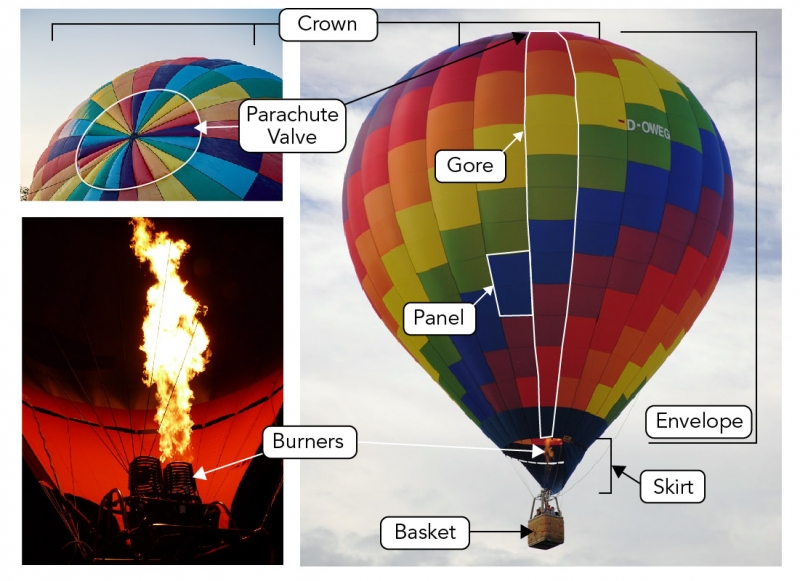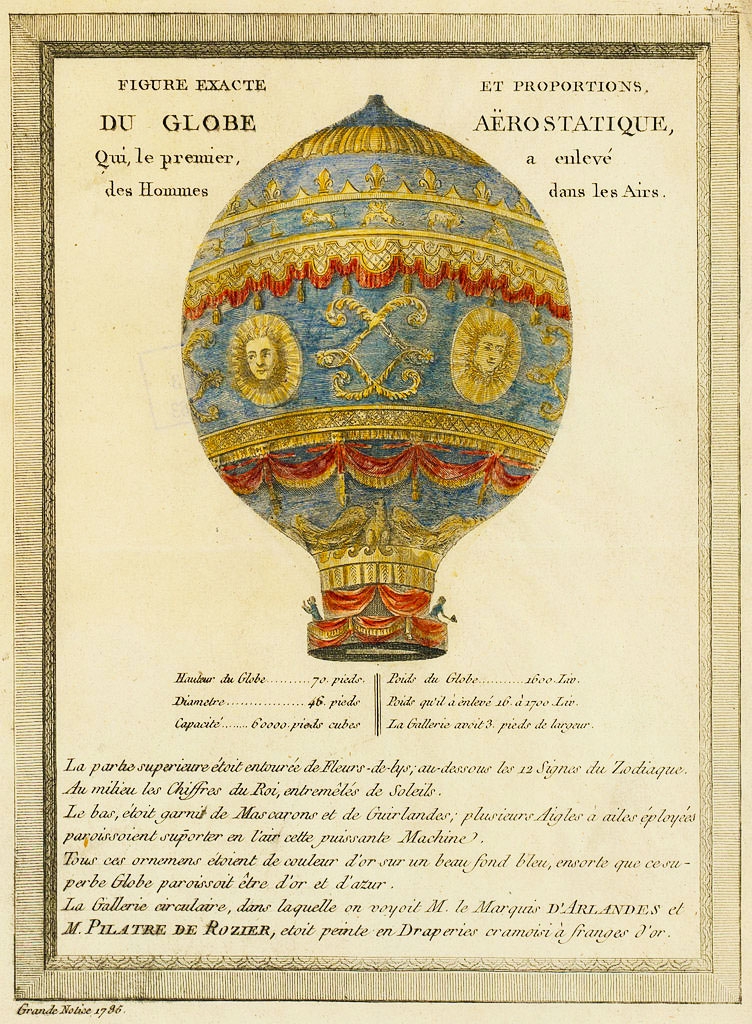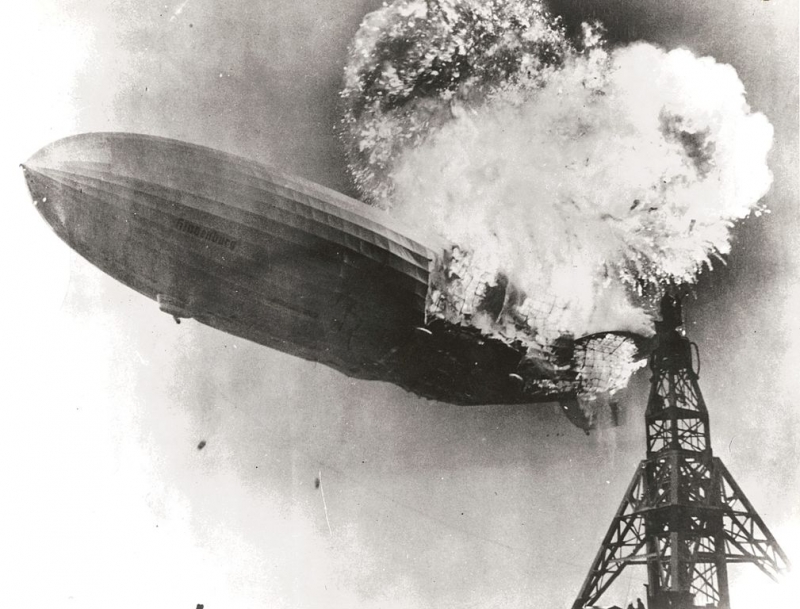Lighter Than Air Vehicles

Hot air balloons at dawn (Timur Kozmenko, Pixabay)

Hot air balloons at dawn (Timur Kozmenko, Pixabay)
How does this align with my curriculum?
Learn about history and workings of lighter than air vehicles.
The oldest types of successful human flight technology are Lighter Than Air (LTA) vehicles. LTAs include hot air balloons, blimps, and zeppelins.
Does it make you wonder, “How could someone believe they could fly in a balloon?” Perhaps, the inspiration came from Chinese sky lanterns. Used in China for more than two thousand years, sky lanterns are paper envelopes with small fires suspended inside them. According to legend, Zhuge Liang (also known as Kongming), a Chinese military strategist who lived from AEC 220–280), is said to have used a lantern to signal for help when surrounded by the enemy. As a result, the lanterns came to be called Kongming lanterns.
Lanterns such as these continue to be used today in festivals around the world.
Did you know?
The Mongolian army used Chinese Kongming lanterns during the Mongol invasion of Poland in 1241.
Hot Air Balloons
Hot air balloons were the first LTA vehicles to be developed. These simple forms of lighter than air flight technology have two main parts:
- The envelope: A large balloon-shaped bag made of lightweight fabric. It is sewn together in panels which are joined to make strips called gores; and
- The basket: A place for passengers and a source of heat. The heat source is typically a burner which uses propane gas.

Image - Text Version
Image - Text Version
Shown are three colour photographs of balloons. Text labels are overlaid on the photos.
On the right is an image of a rainbow coloured hot air balloon in the sky. Several parts are identified with labels. The crown, as you might expect, is at the very top of the balloon. The large teardrop-shaped part of the ballon is called the envelope. It has a similar job to the paper envelope in a Chinese lantern. The rectangular panels of this hot air ballon are different colours, which makes them very easy to identify. The panels are connected together top to bottom to form strips called gores. Below the envelope are a group of ropes that connect the envelope to the basket, where the people are. The basket looks like a woven open topped box, just large enough for a few people to stand in.
On the top left is a close up of the crown of the balloon. At the centre of the crown is a small hole, labelled as the parachute valve. This valve can be opened and closed to let air out of the balloon so it can be lowered.
On the lower left is a close up photo the burners which are shooting flames upwards. This can also be seen on the main photo of the balloon just throught the strings of the skirt.
The ability of a hot air balloon to travel upwards has everything to do with air temperature. When the burners are turned on, they heat the air in the envelope of the hot air balloon. The warmed-up air particles on the inside of the balloon’s envelope become more spaced out than those on the outside of the envelope. The result is that the air inside the balloon becomes less dense than the air outside the balloon. This difference in density causes a force called . Buoyancy is an upward force exerted by a liquid, gas or other fluid that counteracts the weight of an object that is in the fluid. This is the same force that enables certain objects, such as wood, to float on water.
When the upward force of buoyancy becomes greater than the combined weight of the basket, passengers, and fuel tanks, the balloon will go up. You can imagine that for this to happen that there needs to be a fairly large volume of hot air. This is why hot air balloons have very large envelopes.
So, how do hot air balloons come back down? This is done by reducing the heat of the burners or simply shutting them off. This lets the air in the envelope cool off and become denser. Now the weight of the balloon can overcome the buoyancy and descend back towards the surface of the Earth.
The parachute valve at the center of the crown can also let some hot air out. The pilot has cords connected to the fabric of the valve that can be loosened to let hot air escape.This decreases the inner air temperature and density. The valve can be used to speed up a descent or it can be used to control the speed of the rise.
Did you know?
Early hot air balloons didn’t have a parachute valve. This made for some very hard landings! Thankfully, adding the valve was a simple solution. Parachute valves are now used in all modern hot air balloons.
First Men in the Sky
The first manned flight of a hot air balloon was in 1783 at the Versailles castle in Paris. The balloon, then called an aerostatic globe, was created by the brothers Joseph and Jacques Montgolfier. This is why hot air balloons are also known as “Montgolfières.” The brothers more or less created a Chinese lantern that people could ride in. The aerostatic globe even had a metre wide circular gallery for the passengers to walk around on!
Below is the official illustration of the historical feat. On this pamphlet, you can read about its decorations, as well as its dimensions. It weighed more than 750 kg. In comparison, the average modern hot air balloon weighs around 160 kg.

Image - Text Version
Shown is an historical illustration of the Aerostatic Globe. In addtion to a painting of the balloon is text in French. The following is the translation of the text on the image.
Figure and exact proportions of the "Aerostatic Globe", which was the first to first carry men through the air.
Height of the globe: 70 pieds du roi = 22.7 metres = about 75 ft
Weight of the globe: 1600 Livres = 780 kg = 1700 lb
Diameter: 46 pieds du roi = 14.9m = 49 ft
Lifting capacity: 1600-1700 livre = About 780-830 kg = about 1700-1800 lb.
Volume: 60000 pieds cubes = ~2000 cubic metres or 2,000,000 Litres = 73000 cubic ft.
Gallery: 3 pied du roi = 1 metre= 3 ft
The top portion was surrounded by fleurs-de-lys, with the twelve zodiac signs below. In the middle portion were images of the king's face, each surrounded by a sun. The bottom section was filled with mascarons and garlands; Several eagle's wings appear to support this powerful machine in the air. All of this ornamentation was gold on a beautiful blue background, so that that this superb globe appeared to be gold and azure. The circular gallery, in which we see the Marquis D'Arlandes and Mr. Pilatre de Rozier, was covered in crimson draperies with gold fringes.
In 1999, the Breitling Orbiter 3 was the first hot air balloon to fly around the world non-stop. It took 19 days to travel a distance of 40 814 kilometres. This feat was then considered the last aviation challenge of the 20th century because many balloon teams had tried and failed. But if you think it was easy, you would be wrong! Even though the cabin was heated, the drinking water still sometimes froze. Pilots had to work to keep warm and they had to eat dehydrated foods for most of the trip.
The Breitling Orbiter 3 was no regular hot air balloon. The cabin, called the gondola, and the envelope both used advanced technologies to make the flight possible. For example, the gondola needed to be light but strong enough to carry enough fuel, food and oxygen for the 3-week trip. Unlike most recreational hot air balloons, the Breitling Orbiter 3 was a Rozière balloon. This means that it uses both heated air and non-heated helium. You can see some of the technology in this brief video below.
Did you know?
The Swiss pilot of the Breitling Orbiter 3, Jacques Piccard, has completed another record aviation mission. In 2016 he flew around the world without using any fuel! His vehicle, the solar impulse, used only solar energy.
Airships
Airships are the other major type of LTA vehicles. They differ from hot air balloons in that they are motorized. Pilots control where they go. In some countries, airships are also known as dirigibles. The word “dirigible” comes from the French verb diriger which means ‘to direct or steer’. Like hot air balloons, airships have a large envelope that is filled with a gas that is less dense than the surrounding air. Unlike hot air balloons, the gases used are not usually heated. The first lifting gas to be used in airships was hydrogen. Hydrogen is the lightest element to exist. However, it is also a highly flammable gas. Our Sun is mainly made from hydrogen.
On May 6th, 1937, the use of hydrogen as a lifting gas had disastrous results for the passenger airship Hindenburg. Although it had many successful flights, something went wrong on this day and it burst into flames and crashed. There are several theories as to what caused it to catch fire, but no one knows for sure.

Image - Text Version
Shown is a black and white photograph of the Hindenburg moments after catching fire. A huge fiery explosion can be seen occuring at the tail end of the airship which is near the top of the mooring tower.
Ever since the HIndenburg disaster, airships now use helium instead of hydrogen because helium is . Helium is the same gas used to fill the floating balloons you sometimes see at parties.
Types of Airships
Airships differ in how rigid their envelopes are. Non-rigid airships, called blimps keep their shape because of the pressure inside the envelope. Rigid airships, called zeppelins, have a solid frame. There are also semi-rigid airships that have a solid running along the bottom of the envelope.
Non-rigid Airships
Blimps were first developed by the British Navy in World War I for spotting enemy submarines. The word “blimp” is thought to originate from “Class B airship” and “limp” which means non-rigid.
Today, blimps are mainly used for advertising and to film sports events from up high. Goodyear Blimps are probably the best known blimps. They have flown the skies since 1919 to advertise for the company. The modern Goodyear airships can technically no longer be called blimps, though, as they have had a rigid structure since 2014. You can learn more about piloting a blimp in the recommended videos below.

Image - Text Version
Shown is a colour photograph of a Goodyear blimp agaists a backdrop of a blue sky with a few clouds. The blimp is royal blue and white and the gold Goodyear logo is clearly visible on the side of the massive blimp.
Rigid Airships
Zeppelin airships are named after Count Ferdinand von Zeppelin, who was one of the first developers of rigid airships. Given the success of his designs, the term ‘zeppelin’ has come to mean airships in general.
Rigid airships have a frame to support the envelope. Although it adds weight, the frame allows the aircraft to withstand harsh weather conditions. This was preferred for longer flights, such as when crossing between Europe and North America.
Did you know?
In the early 20th century, a zeppelin could cross the Atlantic in two and a half days. The fastest ocean liner needed a minimum of five days!
At 245 meters long, the Hindenburg still holds the record for the biggest zeppelin ever to exist. In comparison, a large passenger aircraft like a Boeing 747, is about 76 meters long. You can clearly see its rigid structure in the picture from the day it caught fire. Although the inventor of the Hindenburg had intended to use his vehicle as a symbol of peace, it was also used as a weapon in wars.
Zeppelins have almost disappeared from the skies since the 1960s. But recently there has been renewed interest in this technology, such as by the French company Flying Whales. The government of Quebec will invest $ 30 million in all in this project. See what the Flying Whales are expecting to do in the promotional video below.
Why this new interest? The main reason is because airships have some advantages over airplanes.
- Airships can remain at the same altitude and hover without having to use fuel.
- An airship can fly backwards and even turn in a circle. This makes them easier to maneuver than airplanes.
- Airships can take off and land vertically, with no need for a runway like most planes. This makes them practical for emergency situations or challenging locations where planes can’t land.
- Unlike airplanes, which can only carry cargo within themselves, an airship could pick up and carry cargo on the outside.
- Airships use less fuel than airplanes and run on gasoline, which is cheaper than jet fuel.
- Unlike aircraft with jet engines which vibrate a lot, airships are very stable which could be useful for precise aerial photography needed for scientific research.
- The gondolas of airships could have lots of windows, making them great for sightseeing!
UK manufacturer Hybrid Air Vehicles has designed a hybrid-electric version of Airlander 10, an airship that could provide a less carbon-intensive alternative to short-haul flights
Did you know?
Typically, the Goodyear blimp only uses one wheel to land.
Hybrid Airships
Many companies have created and flown hybrid airship . Those designs mix airship technology with that of airplanes. However, none have been successful enough to go into production YET. Watch the video below to learn more on a prototype that might take flight in upcoming years. Particularly fascinating is the technology they use to find holes in the envelope!
Learn More
Why Do Hot Air Balloons Have a Hole on the Top?
This article by outdoor Troops presents the science of flying a hot air balloon.
The ultimate feat in aviation: achieving the first non-stop around-the-world balloon flight
This article by Bertrand Piccard presents the technology behind, and the story of, the around-the-world trip aboard the Breitling Orbiter 3 balloon.
What Happened To Blimps? (2021)
This video (9:27 min.) by CNBC talks of the past and future of airships.
What It Takes To Fly The $21 Million Goodyear Blimp (2019)
This video (8:54 min.) by Business Insider interviews a blimp pilot to learn more about this unique and fascinating career.
Hybrid Airships
This Wikipedia article offers information on the hybrid airship prototypes.
References
Airships.net (n.d.) Airships, Dirigibles, Zeppelins and Blimps: What’s the Difference?. Retrieved from https://www.airships.net/dirigible/
Britannica (n.d.). Balloon Flight: Historical Development. Retrieved from https://www.britannica.com/technology/balloon-flight/Historical-development
Château de Versailles (n.d.). The First Hot Air Balloon 19 September 1783. Retrieved from https://en.chateauversailles.fr/discover/history/key-dates/first-hot-air-balloon-flight
Harris, T. (2021). How Hot Air Balloons Work. How Stuff Works. Retrieved from https://science.howstuffworks.com/transport/flight/modern/hot-air-balloon.htm
Piesing, M. (8 November 2019). How airships could return to our crowded skies. BBC Future, retrieved from https://www.bbc.com/future/article/20191107-how-airships-could-return-to-our-crowded-skies
Prentice, B. E. and R. Knotts (2016). Sustainable Transportation: Airships vs. Jet Airplanes. Canadian Transportation Research Forum. Proceedings: 51st, Annual Meeting. Retrieved from https://isopolar.com/sustainable-transportation-airships-versus-jet-airplanes/
Smithsonian National Air and Space Museum (10 October 2020). The History of Ballooning [Youtube]. https://www.youtube.com/watch?v=Amp0zwrHqOw
Woodford, C. (2021). Hot Air Balloons. Explain That Stuff!. Retrieved from https://www.explainthatstuff.com/how-hot-air-balloons-work.html